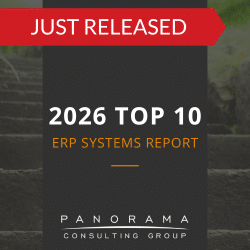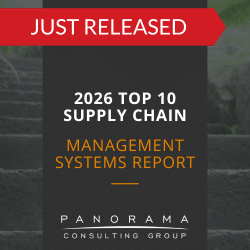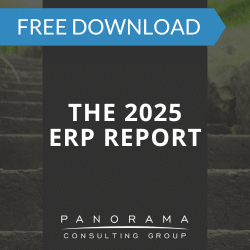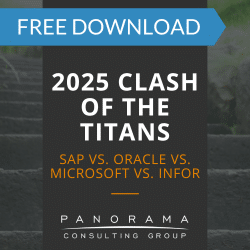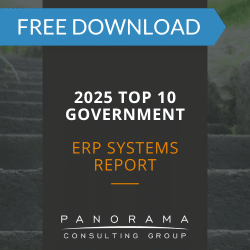Key Takeaways
- ERP projects often fail due to weak contracts, not just technical issues.
- Courtroom disputes reveal how vague terms and hidden clauses harm businesses.
- Strong contract risk management and independent reviews help prevent litigation.
Most ERP failures start before the project even kicks off. The breakdown often begins much earlier—in the fine print of the contract..
In the courtroom, it becomes painfully clear when a contract fails to protect the business. Contract clauses that once seemed harmless—like how “go-live” is defined—end up determining who pays for failure.
Executives navigating digital transformation rarely envision litigation. Yet our software litigation consultants and ERP expert witnesses have seen firsthand how vague commitments, misaligned expectations, and lack of accountability lead to prolonged ERP contract disputes.
Each case offers a valuable lesson: strong contracts are strategic tools, not just legal formalities.
Contemplating litigation?
We have multiple software expert witnesses available for provision of reports, depositions, and testimonies.
The Real Cost of a Bad ERP Contract
When an ERP implementation derails, the damage extends far beyond technical failure:
- Business continuity suffers.
- Financial reporting is delayed.
- Customer experience degrades.
But what often catches executive teams off guard is how unprepared their ERP contract is to absorb that risk.
Panorama’s business software consultants have seen this scenario repeat across industries. The pattern is clear: bad ERP contracts ignore operational realities. They assume perfect data, full resource availability, and clean process alignment—conditions that rarely exist in real transformation efforts.
Why ERP Contract Disputes Keep Ending Up in Court
Organizations selecting top ERP systems expect solutions that support real-world performance. But when contract terms rely on vendor marketing language rather than operational commitments, the cracks emerge quickly.
Most ERP contract disputes center on a few predictable triggers:
- Scope ambiguity: Integration to existing systems is excluded, intentionally or not.
- Service Level Agreement failures: Uptime is maintained, but business-critical workflows remain broken.
- Misrepresentation of capabilities: AI and other advanced features are promised as “native,” but require costly third-party tools post-sale.
Consider a scenario where a global distributor implements a supply chain management system without requiring volume testing in the contract. Once the system goes live, seasonal demand might expose critical flaws, and key distribution centers might experience order allocation failures. The dispute may ultimately escalate into litigation, highlighting how overlooked testing and vague contractual commitments can lead to catastrophic results.
This is the essence of ERP failure: a mismatch between executive expectations and what the contract actually obligates the vendor to deliver.
The Hidden Clauses That Undermine Executives
Several contractual elements appear harmless until they surface in litigation:
- “Go-live” Definitions – Vendors may define go-live as the moment a transaction is processed, regardless of whether core processes function properly. This undermines your ability to delay payments or enforce remediation.
- Integration Disclaimers – If the contract excludes third-party integrations from scope, your SCM software, CRM, or financial planning tools may be sidelined. This leaves internal IT to fill gaps at significant unplanned cost.
- Limitation of Liability Clauses – Caps on vendor liability create asymmetry. The organization bears operational risk, while the vendor faces minimal exposure.
ERP Contract Risk Management
Successful organizations apply the same rigor to contract design that they apply to system selection. A strong ERP contract risk management approach includes:
- Defined ownership of data migration and configuration
- Clear thresholds for change orders and scope expansions
- Business outcome–oriented SLAs—not just system availability
- Comprehensive requirements gathering to ground contractual commitments in measurable business needs
Recently, Panorama worked with an industrial service provider evaluating whether to retain, re-implement, or upgrade its ERP system. More than 600 requirements were documented across finance, logistics, purchasing, sales, and product management.
This underscores a key contract lesson: requirements clarity upfront creates leverage later. By documenting requirements in detail, the client ensured that contractual commitments with its chosen vendor would be grounded in measurable business needs—reducing the risk of misalignment that so often ends up in court.
Strategic Recommendations from a Software Litigation Consultant’s Perspective
Executives should approach ERP contracting as risk transfer and alignment mechanisms. Panorama’s role as a software litigation consultant informs several strategic recommendations:
- Bring in independent ERP advisors to review ERP contracts. Avoid advisors tied to referral fees from ERP vendors or implementers.
- Separate software selection from implementer selection. The best ERP software list for your needs may not match the best services partner. Maintain objectivity.
- Model your implementation in advance. Simulate real data, edge cases, and process complexity before you sign. If the vendor cannot demonstrate competence, walk away.
- Establish structured governance early. Include executive steering, escalation paths, and scenario planning as part of your first 90-day roadmap.
These steps help organizations avoid hidden contract terms that shift blame and limit accountability.
Learn More About ERP Litigation
The strongest contracts do more than mitigate legal risk. They align incentives, define success, and reflect how the business actually operates.
The courtroom shows us what happens when ERP contracts are treated as administrative hurdles.
Interested in protecting your ERP investment?
Panorama’s ERP experts provide vendor-neutral guidance grounded in real-world experience—including ERP project recovery. Contact us below for a risk review, ERP contract assessment, or implementation support.






